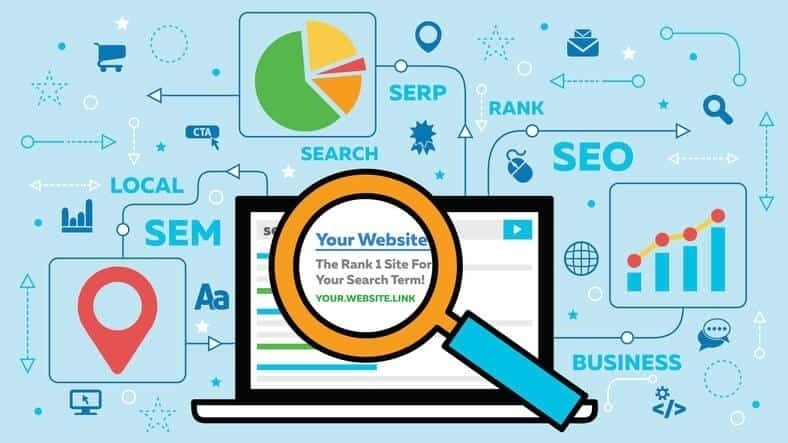Your business page is one of the most powerful resources at your disposal, but you need a strong website optimization strategy to get the most from your site.
Besides building brand awareness, your site allows you to connect with interested customers and drive more leads. But, like other digital marketing resources, you need to review your page content, find broken links, adjust the right ranking factors, and make other improvements to get the best results.
While techniques like search engine optimization (SEO), social media marketing, and pay-per-click (PPC) can produce more customers, optimizing your site will help amplify the results of each one.
In this article, we’ll define web optimization. We’ll also share 8 steps to optimize your site and go over the best website optimization tools at your disposal. Finally, we’ll go over SEO website optimization tips to get the best results from your organic efforts.
Website Optimization Explained
Before going any further, let’s go over the definition of website optimization.
In general terms, website optimization strategies focus on improving the performance of a site. These strategies rely on specialized tools, experiments, and other techniques that help marketers identify and adjust areas of improvement within a website.
Web improvements can be performed for specific digital marketing strategies. For example, the optimization of a website for search engines is different from the adjustments required for a successful paid ads conversion rate optimization (CRO).
8 Steps to Optimize Your Website
The goal of all optimization processes is to ultimately improve the user experience (UX). Users who have a good experience while interacting with your brand will have a better impression of your business. This, in turn, means that these users will be more likely to convert once on your landing pages.
As we mentioned earlier, you need to create a plan for each marketing channel. Website visitors behave differently depending on which platform they were on right before visiting your website.
This means that you have to evaluate user behavior on each channel and create an itinerary with steps that help improve your website performance in that specific area.
With the above in mind, here are 8 general steps that you can implement in your optimization process. We’ve ensured that most steps are applicable in a wide range of scenarios, so make sure to adjust these depending on the channel you want to optimize.
1. Narrow Down Your Target Audience
Before choosing your first optimization tool, the first thing you need to do is study your audience. But, rather than simply collecting information, take this time to narrow down your target audience.
You’ll need to have a tool like Google Search Console installed in order to understand how different user groups behave on your page. But, we’ll cover the top tools to use while optimizing your website later in this post.
2. Keep the User Intent in Mind at All Times
The user intent is the intention that an individual has when browsing the web. It’s important to keep this in mind because it will help you focus on the ultimate goal: to make your website a valuable source of leads.
Keeping track of the objective of your content is not always easy, especially when focusing on technical SEO, PageSpeed Insights results, and fluctuating conversion rates.
Identifying the user intent for each landing page is a great way to verify that your content produces predictable results. If not, you may find yourself producing accurate, high-quality content that doesn’t engage your audience.
3. Focus on Improving the User Experience
We’ve mentioned UX in this article, but it’s important to understand that this element plays a huge role in web optimization.
Besides helping conversion rate statistics, a great UX will help you maintain a good reputation. Not only this, if Google crawlers and similar bots have an easy time crawling your web pages, you’ll get awarded better rankings.
4. Create a Better Backlink Profile
A high position on organic results is crucial, but a solid page improvement strategy should also include the creation of a solid backlink profile.
Backlinks refer to the URLs that point back to a specific piece of content. This is a Google ranking factor. So, if websites with a good ranking point to your site, you’ll likely see a boost in search results positions.
5. Carefully Assess Your Target Keywords
Keywords are a crucial part of both paid and organic campaigns. If you focus on getting your keywords right during your website optimization, Google and other engines will likely reward you with a better ranking on relevant search results.
The platform you use to perform your keyword research will directly impact your success. Even though it’s provided by Google, free tools like the Keyword Planner don’t always have the most updated data. So, you need to use an SEO tool that provides accurate information to help guarantee your website’s performance.
6. Boost Website Speed as Much as Possible
If your page load time is more than five seconds on any part of your site, you’re likely losing a significant amount of traffic. The good news is that you can improve loading times with website speed optimization.
Keep in mind that page speed also affects your Google rankings. So, you need to take steps like compressing images and cleaning unnecessary code to improve page speed across your entire site.
7. Analyze the Behavior of Your Current Customers
You should use external resources to perform part of your audience research. But, don’t forget to leverage your current group of customers.
Make sure to divide customers based on the channel they converted through. Take the time to divide between desktop and mobile customers.
Then, analyze behavioral patterns in spending and other important areas. This will help you determine the most valuable customers and to who your resources should be directed.
8. Create an Accurate Measurement System
Knowing statistics about overall traffic and conversions is essential to properly optimize your site. That said, you need to have a powerful tracking system in order to gain access to the most valuable metric.
Make sure to install Google Analytics or a tracker of the same quality on your site. You can also leverage additional tracking tools, but we’ll cover these in detail in the next section.
Best Tools for Website Optimization
Now that we’ve covered the general steps to attract more web traffic, it’s time to go over the best website optimization tools.
Similarly to SEO tools, a website optimization tool is any platform that can help you adjust your site for better performance and improve user experience.
Before you opt for high-end website optimization tools, it’s important to note that these platforms require an in-depth understanding of digital marketing strategies.
If learning about the different methods represents too much of an investment, your best bet is to work with a website optimization company that can adjust the different elements and improve your web page SEO.
Here’s a list of tools that can help you create a mobile-friendly page, improve page speed, and make your site more engaging.
- Screaming Frog (or other trackers that allow for session recordings)
- Google’s Mobile Test (through Search Console)
- AHREFS
- Yoast SEO
- SEMrush
Website Optimization SEO Tips
Website SEO optimization is crucial because it can help accelerate the results you get from your organic campaigns.
Here are three tips to help improve your organic website optimization efforts:
- Perform technical and content optimization separately
- Perform A/B testing from the get-go
- Make sure your mobile experience is superb
Ready to Optimize Your Website? Fannit Is Here to Help
Ensuring that your site is working well for desktop as well as mobile devices requires a personalized plan.
If you don’t have the bandwidth to take this on, make sure that you work with an agency that can test your site, identify all relevant keywords, and perform a thorough page optimization on each crucial page of your website.
To learn more, contact Fannit today.


